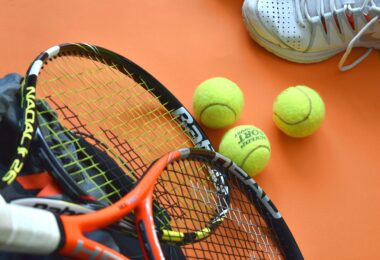Periodization for Junior Tennis Players: Age-Specific Training Considerations
When considering periodization in tennis training for junior players, it is essential to tailor practices to their age-specific developmental needs. Young athletes go through various physical and psychological stages, which can greatly influence their training. For instance, under the age of 12, focus should be primarily on developing fundamental motor skills such as running, jumping, and balance. These foundational skills are vital for future tennis performance and help prevent injuries. Conditioning should be fun and engaging to motivate the players to participate fully. As youth progress, attention can shift to skills that enhance their actual game. This is where sport-specific drills come into play, permitting the child to absorb more tactical aspects of the game, such as positioning and shot selection. Coaches should deliberately incorporate match play to improve competitive cognition. Furthermore, as children mature, the structuring of training schedules must integrate strength and conditioning components. Emphasizing adaptability during this stage can be crucial, as young players might face growing competitions, emphasizing the importance of tailored training regimens designed around their specific needs.
Another key aspect of periodization in junior tennis training is understanding the concept of growth spurts. Junior athletes experience differential growth rates, meaning their ability to execute certain skills may fluctuate significantly. This can often lead to increased vulnerability to injuries during these phases, necessitating a careful approach to training. Coaches should aim for a gradual increase in intensity and volume as players transition through these growth patterns. Moreover, incorporating adequate rest and recovery periods is vital during this time. Periodization involves adjusting training loads based on developmental phases, allowing young athletes to adapt physically and mentally. Cross-training can provide benefits while safeguarding against burnout or overuse injuries. It is also important to integrate education on health and nutrition tailored for junior athletes, ensuring they understand the direct impact of their choices on their performance and well-being. Engaging them in discussions about balancing sports with academics will help build a healthy mindset. Coaches can organize workshops or invite nutritionists to educate these young players. Ultimately, a well-rounded periodization plan will lay down the groundwork for a sustainable tennis career.
Key Components of Effective Training
Effective periodization in tennis training involves a multifaceted approach, addressing physical, technical, and psychological aspects of young players’ development. Conditioning workouts should vary in intensity and volume, promoting thorough training without chance of injury. For instance, during the off-season, focus can center around building strength and enhancing endurance. Players can engage in weight training and circuit workouts tailored for their ages. Coaches should emphasize core stability and balance training, as these foundational components can significantly enhance tennis performance. Additionally, incorporating specific tennis drills that target gameplay mechanics will help to reinforce skills throughout the training structure. Mental conditioning is an equally important facet of training. Mental toughness can be cultivated through visualization techniques and stress management exercises. These practices equip junior athletes to handle match pressures effectively. Regularly integrating goal setting into the training routine can instill a sense of purpose among players. Coaches can help young athletes establish realistic, measurable, and time-framed objectives, aiding them in focusing their efforts effectively. By fostering both physical and mental aspects of the game, juniors will have a better opportunity to evolve into well-rounded athletes.
Moreover, monitoring and evaluating player progress is a cornerstone of effective periodization. Coaches should maintain meticulous records of each player’s performances and training outcomes. Frequent assessments can reveal significant improvements or highlight areas needing additional attention. This data is crucial for making informed adjustments to training plans. Technology can enhance these evaluations by tracking specific statistics, such as match scores and fitness metrics. This approach enables a tailored response that best suits each player’s unique demands. Additionally, understanding the individual athlete’s preferences, strengths, and weaknesses can guide the development of personalized training regimes, further boosting engagement and motivation. Communication between coach and player is essential. Feedback loops ensure that juniors feel heard and involved in their training process, leading to improved consistency and dedication. Moreover, parents also play an essential role in this aspect by providing necessary support and encouragement. Regular family discussions about the athlete’s journey can foster a nurturing environment, helping to balance competitive pressure effectively. Establishing a strong support system will positively influence the player’s mental well-being.
The Role of Competitive Play
Competitive play is an integral aspect of a junior athlete’s development, directly reflecting their readiness for future challenges. Participation in tournaments provides invaluable experience, allowing young players to apply what they have learned during training in real match situations. This exposure not only enhances technical skills but also fosters resilience and adaptability, as they learn to navigate various styles of play. Coaches should strategically schedule competitions throughout the season to ensure players participate genuinely without overwhelming them. Emphasizing the importance of competition should not equate to placing undue pressure on junior players. Prioritizing personal development and encouraging the learning experiences derived from match play can help create a positive atmosphere. Additionally, coaches must teach young athletes how to analyze matches effectively, identifying strengths and areas for improvement. This analytical skill is vital for their growth in the sport. Building a culture that celebrates effort and sportsmanship can lessen the fear of failure and promote a desire for continuous improvement. Conducting self-reflection sessions after tournaments will allow players to gain insights into their performances, guiding future training priorities and personal goals.
Nutrition plays a pivotal role in supporting junior players’ training and performance. Establishing healthy eating habits at an early age ensures that athletes can meet the increased energy demands of training and competition. Adequate hydration is equally crucial. Coaches and parents should collaborate to educate children on the importance of balanced diets tailored to their activity levels. Young athletes should be encouraged to consume a variety of nutrients to promote overall health. Including lean proteins, whole grains, healthy fats, and plenty of fruits and vegetables will aid recovery and optimize athletic performance. Coaches can use resources like nutrition workshops to involve players in their meal planning. This approach emphasizes the importance of personal responsibility for their nutrition. Sugar and processed foods can lead to energy crashes and hinder performance, so guiding Juniors in making informed choices is paramount. Furthermore, teaching them to recognize the signs of poor nutrition will empower them. Integrating nutrition discussions into training can heighten awareness and responsibility among young athletes. Ultimately, supporting a balanced approach to nutrition creates the foundation for lasting fitness habits.
Conclusion
In conclusion, effective periodization for junior tennis players hinges on a comprehensive understanding of their unique developmental needs. By prioritizing age-specific strategies centered around physical, technical, and mental preparedness, coaches can significantly enhance performance while safeguarding against injuries. A tailored approach, rooted in evaluating player progress and adapting training regimens, empowers young athletes to maximize their potential. Emphasis on healthy habits, including nutrition and hydration, further enriches the training experience. Young players learn to balance competitive pressures through structured play and regular discussions with coaches and families. Furthermore, integrating recovery practices and cross-training can enhance athletic resilience, nurturing a love for the game. By focusing on well-rounded development, coaches prepare junior players for a successful journey in tennis. Ultimately, these thoughtful training practices lay a strong foundation for lifelong engagement with the sport, promoting both fitness and enjoyment. Junior athletes equipped with the right tools and support are more likely to thrive, both on and off the court. Through proper periodization, the future of tennis can ensure a new generation of champions, fostering a culture of excellence and resilience within the sport.
Overall, committed coaches and supportive families drive the success of junior tennis players, as they ensure players receive the guidance necessary to navigate their unique journeys through competitive sports. Implementing these training considerations will require cooperation and collaboration among all stakeholders in a player’s development. Fostering a positive environment for tennis participation is paramount, as enjoyment of the game can significantly influence player retention. The engagement of parents in this process is crucial, as their encouragement can boost a child’s confidence and motivation. By working alongside coaches, families can ensure a holistic approach to support for junior players. The conversation regarding player health, both physical and emotional, must remain open and constructive. The future of tennis training lies in recognizing the multifaceted demands players face and crafting training programs that celebrate athletes’ unique profiles. Emphasizing development rather than solely outcomes will create a healthier sporting environment. This environment nurtures fitness, well-being, and passion for tennis, vital for future growth. In essence, by prioritizing the players’ needs, we elevate the standard for youth tennis training while ensuring a sustainable and fulfilling athletic career for each young athlete.





